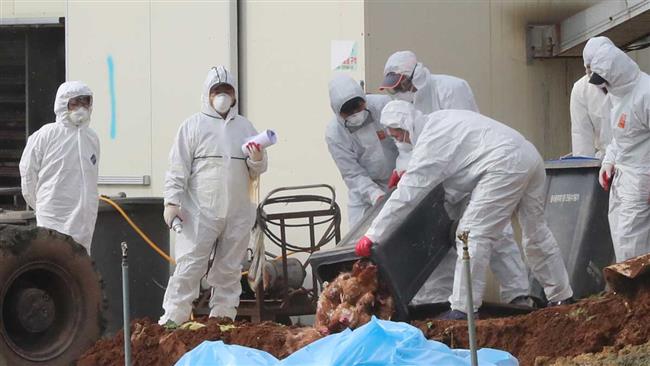WHO urges global alert for flu pandemic
The World Health Organization (WHO) has issued a new directive on the deadly avian virus, inviting countries around the world to monitor its outbreak and potential threats to human beings.
"The rapidly expanding geographical distribution of these outbreaks and the number of virus strains currently co-circulating have put WHO on high alert," WHO Director-General Margaret Chan said in Geneva.
Over the past few months, the highly contagious H5N8 virus has been reported in at least 40 countries. Scientists have raised concerns that bird flu strains could mutate to be transmitted in humans.
Chan also mentioned that following the rather “mild” pandemic of the H1N1 virus in 2009-2010, more preparation is underway globally for the next influenza pandemic.
According to WHO, 350 million doses of vaccine have been promised for distribution under a certain agreement with drug makers. In return, countries must share their virus samples in a move towards deriving a pandemic vaccine.
With regards to China, Chan said it was not possible to rule out the possibility of human-to-human infection in two of the reported cases, but pointed out that these examples were not accounted as grim strains of the virus.
Based on the International Health Regulations, the 194 WHO member states are mandated to fulfill their duty by detecting and reporting cases early so that human cases can be identified.
According to official reports from China’s delegation led by Zhang Yang, the country has already recorded as many as 225 cases in the fifth wave of the H7N9 activity.
The first case of a human contracting avian influenza virus of the H7N9 strain was registered in China in March 2013. A number of deaths have been reported in 2106 amid an outbreak of the H7N9 virus in birds there.
France, with the largest poultry flock in the European Union, has reported outbreaks of the H5N8 virus. A massive poultry culling was performed in the EU in 2014 due to the virus.
The H5N8 virus is highly contagious in birds but it has never been found in humans.
Earlier in January, the US Department of Agriculture reported that a type of bird flu in a wild duck was detected in Montana. The flu appeared to match one of the strains found during an outbreak of the disease in 2014 and 2015 that led to the deaths of millions of chickens.
Maccabi Tel Aviv fans chant hate, make Nazi gestures during football match
Israeli airstrikes hit southern Lebanon amid ongoing ceasefire violations
Fourteen Palestinians, including kids, die in Gaza amid freezing temperatures
Putin’s visit to India reinforces Moscow-Delhi ties amid US sanctions, pressures
Discover Iran: Ashuradeh, Iran's only Caspian Sea island and sanctuary for birds, wildlife
VIDEO | Top documentarians gather for 19th Cinema Verite in Tehran
Press TV's news headlines
VIDEO | Karachi hosts Iran trade exhibition to boost economic ties










 This makes it easy to access the Press TV website
This makes it easy to access the Press TV website